Abstract
Widespread type II diabetes among North American Indians and certain other populations is a relatively recent medical phenomenon. Increased prevalence of diabetes appears to be related to sudden cultural shifts toward sedentary lifestyle and increased caloric intake. These changes, super-imposed on a genetic predisposition to diabetes, pose a community health threat to the Zuni and similar populations. Regular aerobic exercise is clearly beneficial to most type II diabetics. The key public health issue is how to establish community participation in effective aerobic activity. The Zuni Diabetes Project, fully described here, serves as a model in this respect.
Full text
PDF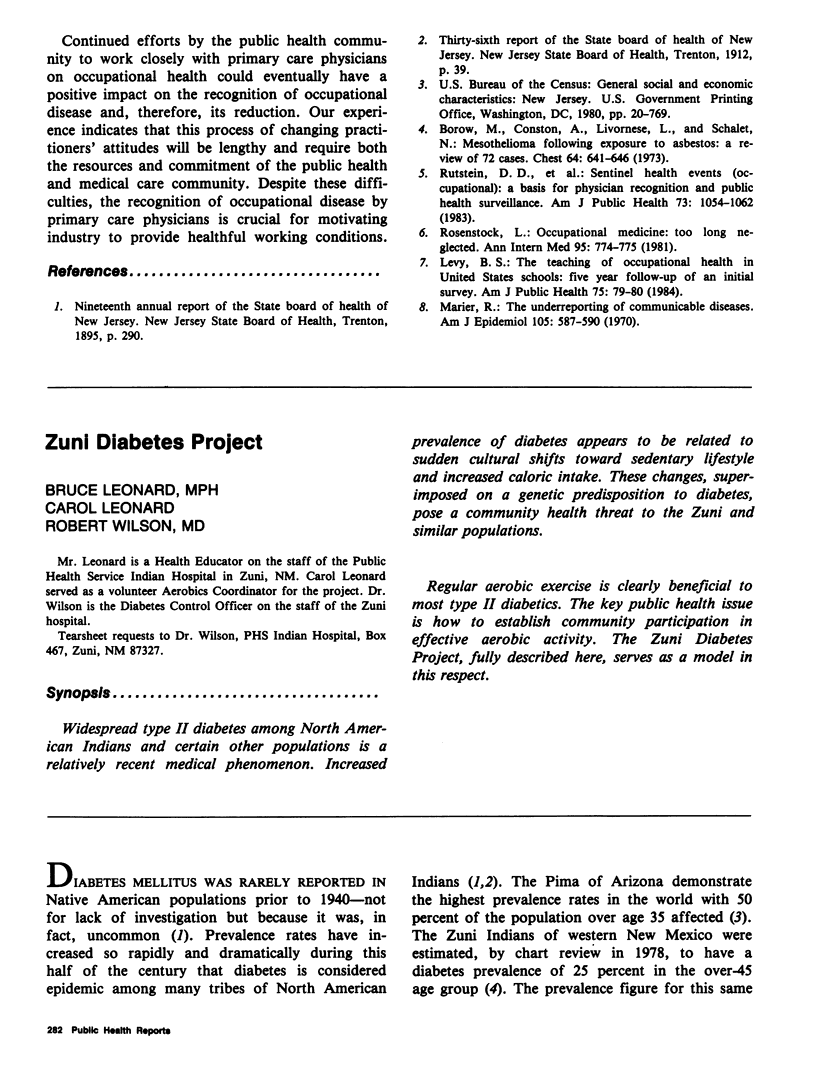
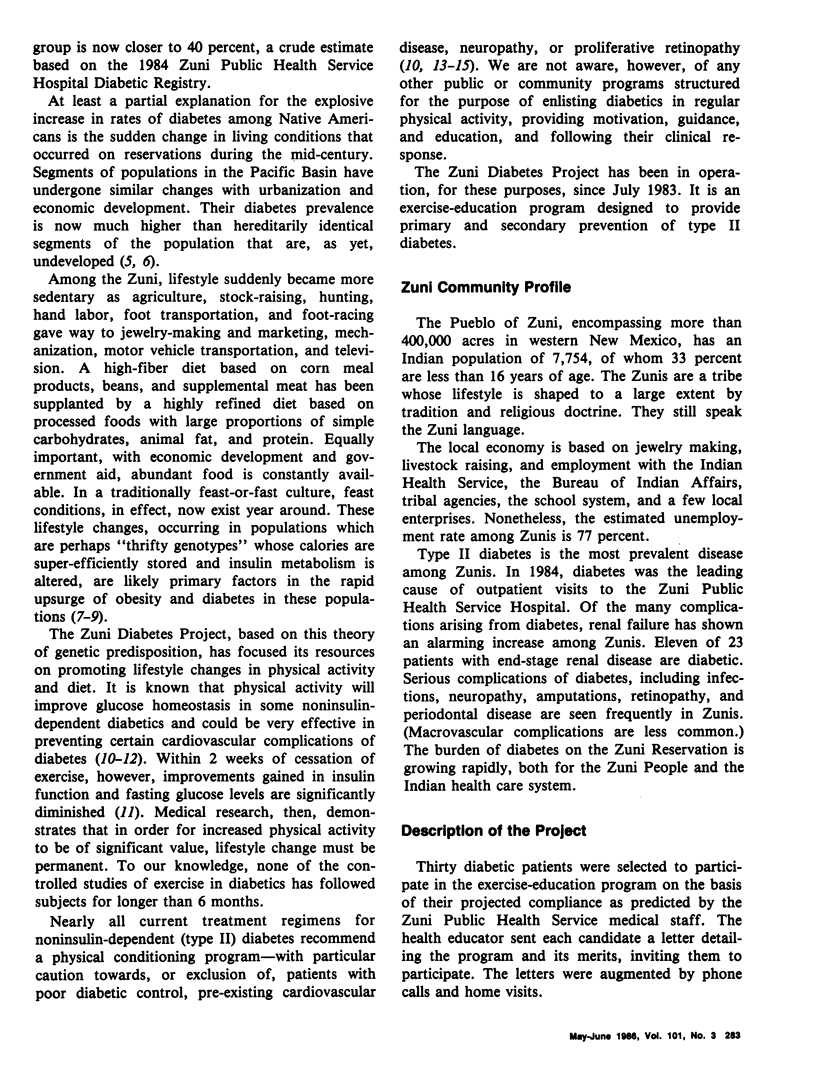
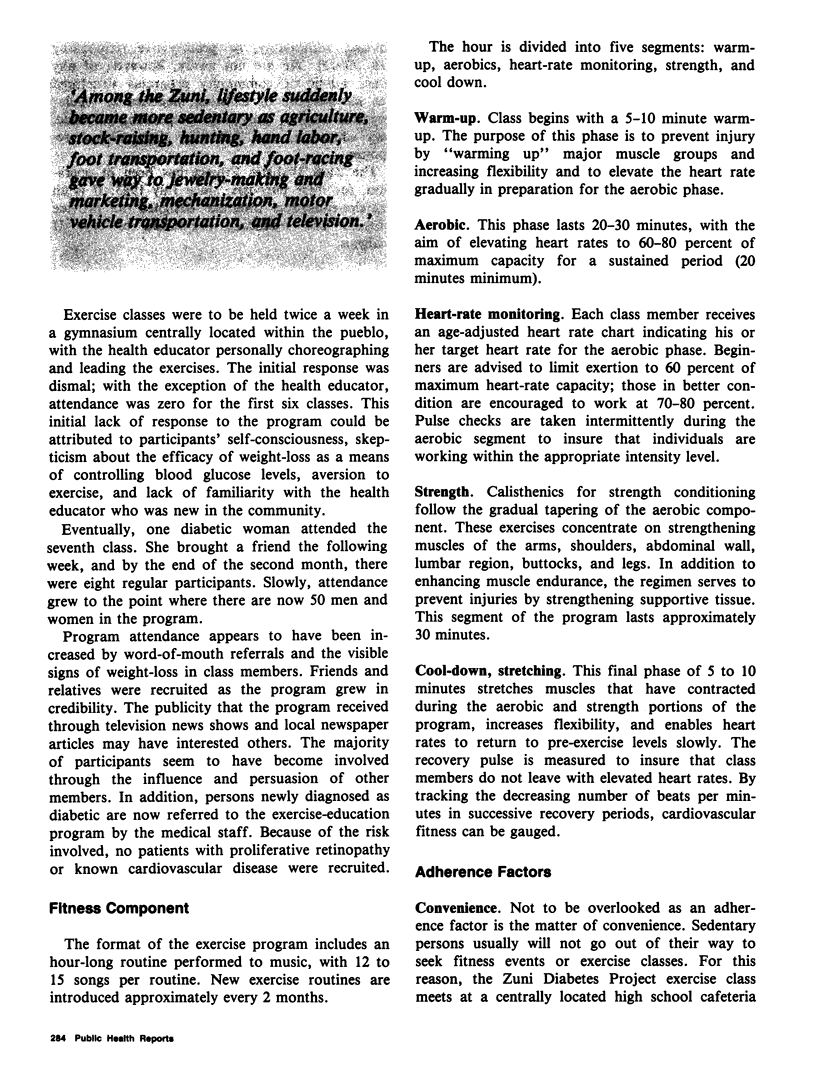
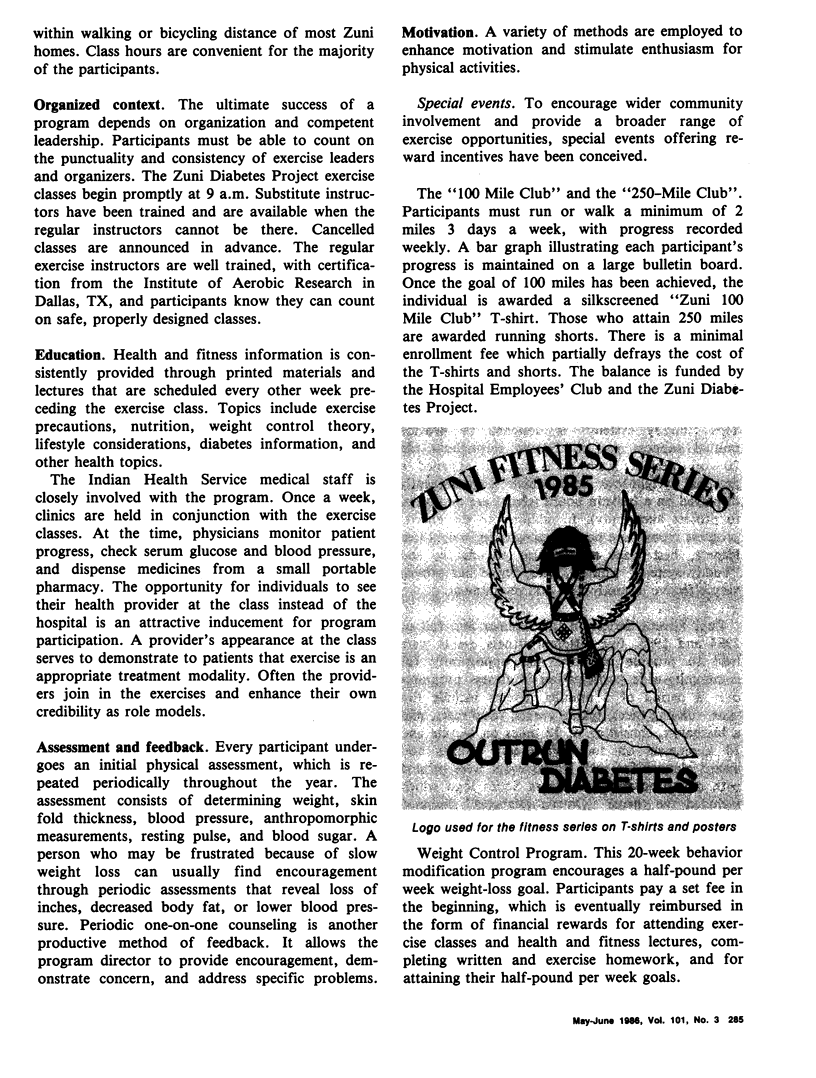
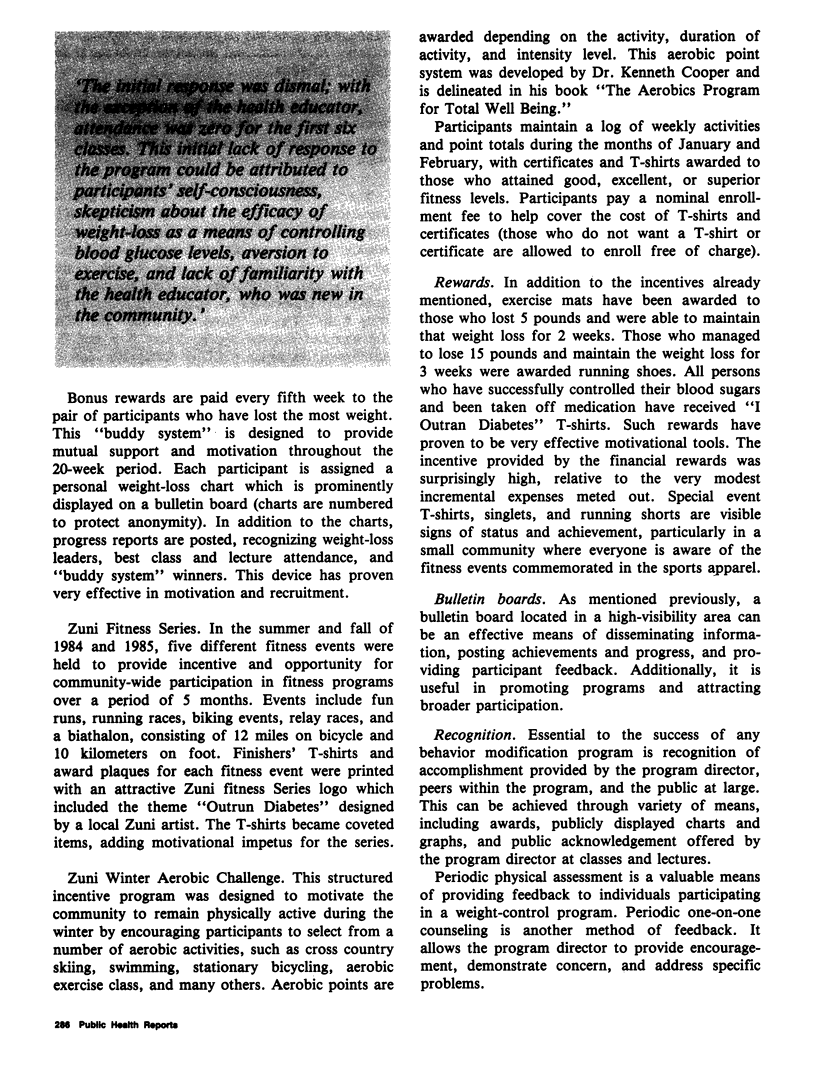
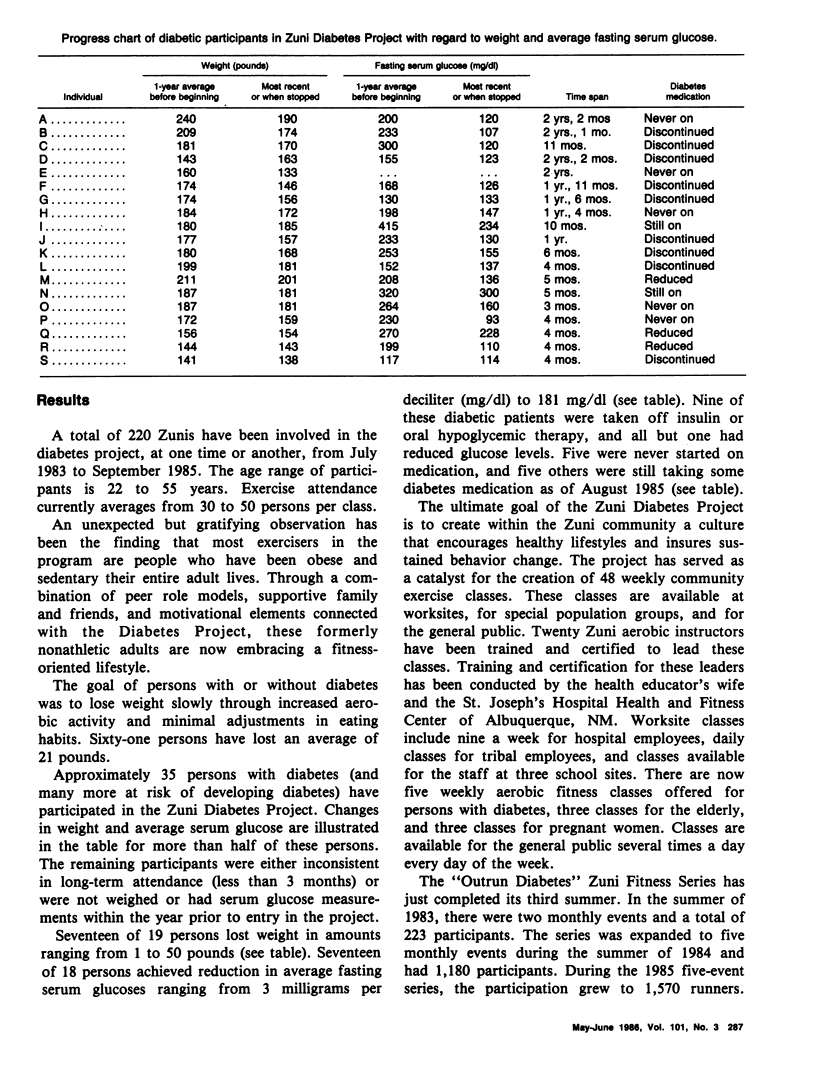
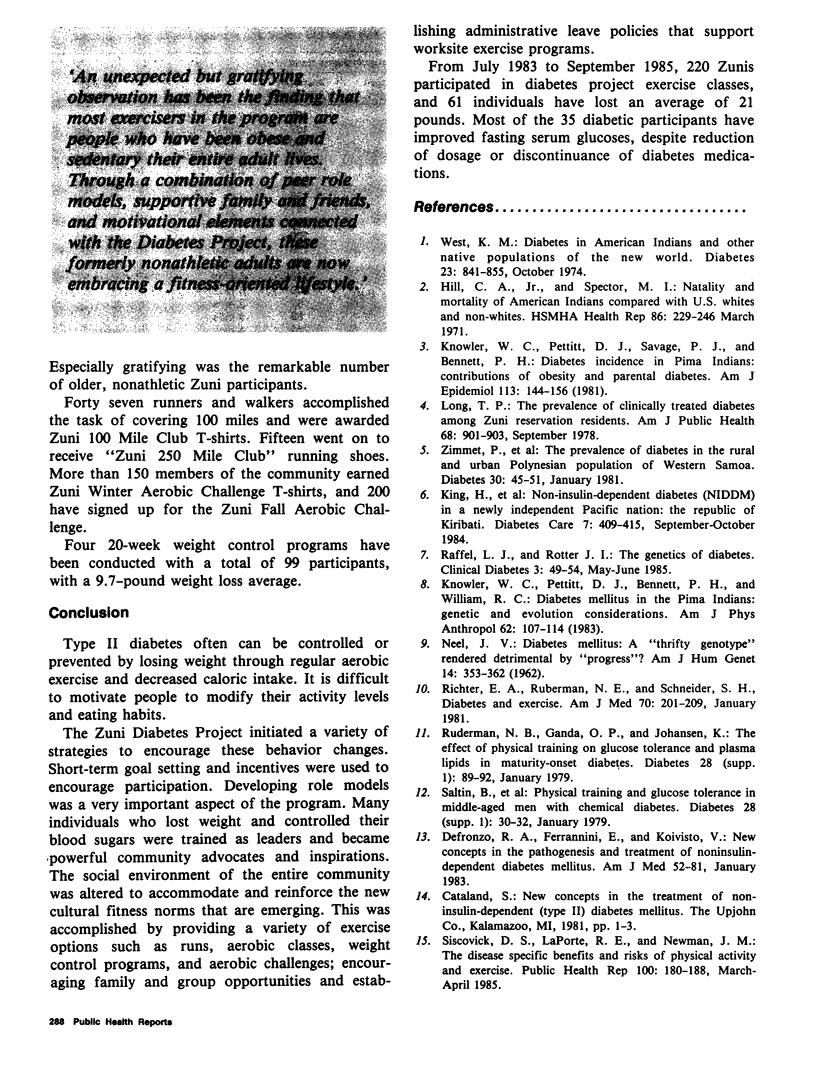
Selected References
These references are in PubMed. This may not be the complete list of references from this article.
- Hill C. A., Jr, Spector M. I. Natality and mortality of American Indians compared with U.S. whites and nonwhites. HSMHA Health Rep. 1971 Mar;86(3):229–246. [PMC free article] [PubMed] [Google Scholar]
- King H., Taylor R., Zimmet P., Pargeter K., Raper L. R., Beriki T., Tekanene J. Non-insulin-dependent diabetes (NIDDM) in a newly independent Pacific nation: the Republic of Kiribati. Diabetes Care. 1984 Sep-Oct;7(5):409–415. doi: 10.2337/diacare.7.5.409. [DOI] [PubMed] [Google Scholar]
- Knowler W. C., Pettitt D. J., Bennett P. H., Williams R. C. Diabetes mellitus in the Pima Indians: genetic and evolutionary considerations. Am J Phys Anthropol. 1983 Sep;62(1):107–114. doi: 10.1002/ajpa.1330620114. [DOI] [PubMed] [Google Scholar]
- Knowler W. C., Pettitt D. J., Savage P. J., Bennett P. H. Diabetes incidence in Pima indians: contributions of obesity and parental diabetes. Am J Epidemiol. 1981 Feb;113(2):144–156. doi: 10.1093/oxfordjournals.aje.a113079. [DOI] [PubMed] [Google Scholar]
- Long T. P. The prevalence of clinically treated diabetes among Zuni reservation residents. Am J Public Health. 1978 Sep;68(9):901–903. doi: 10.2105/ajph.68.9.901. [DOI] [PMC free article] [PubMed] [Google Scholar]
- NEEL J. V. Diabetes mellitus: a "thrifty" genotype rendered detrimental by "progress"? Am J Hum Genet. 1962 Dec;14:353–362. [PMC free article] [PubMed] [Google Scholar]
- Richter E. A., Ruderman N. B., Schneider S. H. Diabetes and exercise. Am J Med. 1981 Jan;70(1):201–209. doi: 10.1016/0002-9343(81)90427-7. [DOI] [PubMed] [Google Scholar]
- Ruderman N. B., Ganda O. P., Johansen K. The effect of physical training on glucose tolerance and plasma lipids in maturity-onset diabetes. Diabetes. 1979 Jan;28 (Suppl 1):89–92. doi: 10.2337/diab.28.1.s89. [DOI] [PubMed] [Google Scholar]
- Saltin B., Lindgärde F., Houston M., Hörlin R., Nygaard E., Gad P. Physical training and glucose tolerance in middle-aged men with chemical diabetes. Diabetes. 1979 Jan;28 (Suppl 1):30–32. doi: 10.2337/diab.28.1.s30. [DOI] [PubMed] [Google Scholar]
- Siscovick D. S., LaPorte R. E., Newman J. M. The disease-specific benefits and risks of physical activity and exercise. Public Health Rep. 1985 Mar-Apr;100(2):180–188. [PMC free article] [PubMed] [Google Scholar]
- West K. M. Diabetes in American Indians and other native populations of the New World. Diabetes. 1974 Oct;23(10):841–855. doi: 10.2337/diab.23.10.841. [DOI] [PubMed] [Google Scholar]
- Zimmet P., Faaiuso S., Ainuu J., Whitehouse S., Milne B., DeBoer W. The prevalence of diabetes in the rural and urban Polynesian population of Western Samoa. Diabetes. 1981 Jan;30(1):45–51. doi: 10.2337/diab.30.1.45. [DOI] [PubMed] [Google Scholar]


